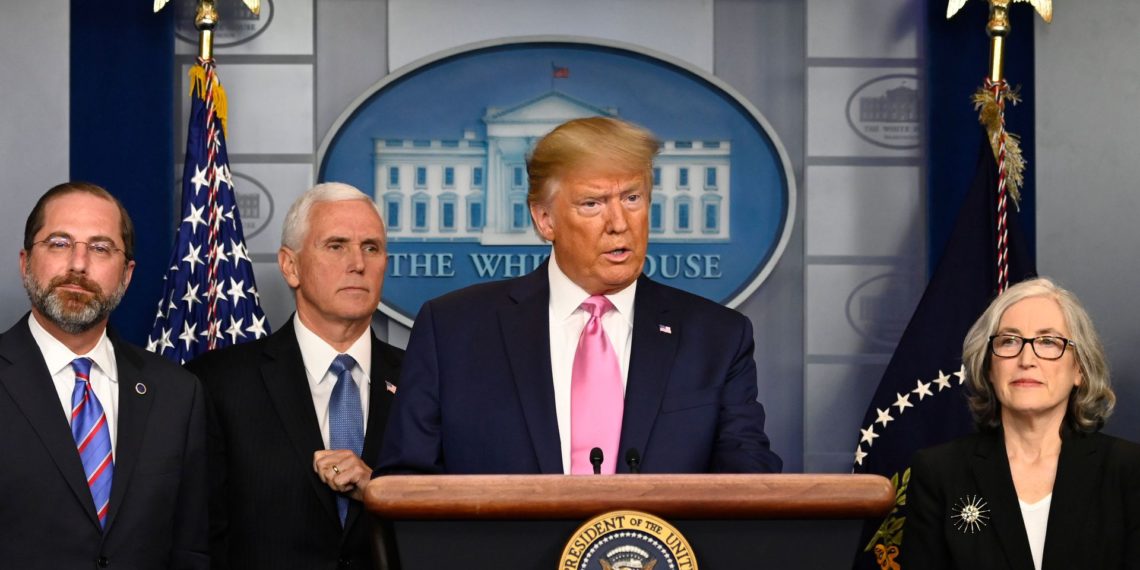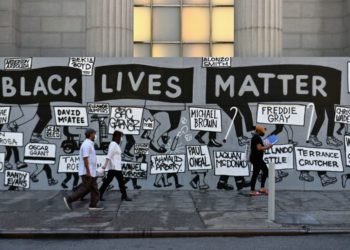The novel coronavirus known as COVID-19 is spreading in countries around the world with more than 100,000 confirmed cases globally. As the U.S. government responds to the virus and takes measures to prevent its spread, the high cost of health care and the lack of universal coverage pose additional challenges.
So far in the U.S., more than 500 people have tested positive and 22 have died with most of those deaths taking place in the state of Washington.
Two Congressmen have also decided to quarantine themselves after coming in close contact with individuals who later tested positive for the virus.
On Friday morning, President Donald Trump signed an $8.3 billion emergency spending package to combat the virus through prevention, testing, and the development of treatments and a vaccine.
Testing and Quarantines
Still, the Center for Disease Control has not publicly disclosed the number of individuals tested for the virus and is well behind the White House’s stated goal of 1 million tests available by the end of last week. Health and Human Services Secretary Alex Azar said Thursday in Washington, that the actual number would be enough to test 75,000 people.
Marc Hiller, a professor of health management and policy at the University of New Hampshire told The Globe Post testing is important because it allows the government to collect information about where infected people are and determine how to prevent infected individuals from spreading the virus to others.
“You want to do testing so that you can confirm with scientific evidence where persons who have been infected are so that you can restrict others from having access to them in terms of becoming infected eventually and or carrying the virus to another party,” Hiller said.
More than 550 coronavirus cases have been reported in 30+ US states.https://t.co/zmQZmAgHGt pic.twitter.com/xRGcqWO5fB
— NBC News (@NBCNews) March 9, 2020
According to Hiller, adequate testing can help to lessen the impact of the virus on people’s daily lives and the economy, as it allows for a more targeted response that doesn’t end up needlessly quarantining people who do not have the virus.
“We’re relying a lot on the strategy of social distancing, avoiding crowds, and constraining or quarantining large numbers of people,” Hiller said. “Maybe that large number doesn’t necessarily need to be restrained if we could identify the much smaller number of persons in that large group that stand to potentially infect others.”
Quarantines can be effective in preventing COVID-19’s spread, but they can also have negative implications for the economy as well as the civil liberties for quarantined individuals according to Patrick Fafar, an associate professor at the University of Ottawa, explaining quarantines can prevent people from participating in the economy or even that governments might exploit quarantines to limit personal freedoms.
“There is an instinct to shut everything down which is fine from a public health perspective, but may be really bad from an economic perspective,” Fafar told The Globe Post. “It’s made worse by the fact that once you admit that possibility, states will often do it because they can, not because there’s a public health outbreak…You don’t use your quarantine power unless you have to because it’s a pretty dramatic limitation of civil liberties.”
Uninsured Americans
Another challenge for the U.S. government as it works to contain the novel coronavirus is the country’s large population who do not currently have health insurance. According to the U.S. Census Bureau 8.5 percent of Americans, or roughly 27.5 million people, do not have health insurance. Further, millions more Americans are under-insured, facing high out-of-pocket costs and co-payments when they need medical care.
With many Americans already delaying visits with their doctors due to out of pocket costs associated with healthcare, some Americans may have difficulty affording testing or necessary care should they become infected with the virus according to Donna Patterson, a global health expert and department chair at Delaware state University.
Patterson told The Globe Post that a large uninsured population could contribute to further community spread of the virus and lessen the ability to contain outbreaks.
“Do we want patients with suspected cases of coronavirus to bear the brunt of their medical testing costs?” Patterson said. “In this case, it would be counter-intuitive to efforts to control the spread.”
Democratic leaders Nancy Pelosi and Chuck Schumer call on President Trump to support steps to help Americans deal with the coronavirus outbreak, including paid sick leave, free testing, upgraded unemployment insurance and other moves. https://t.co/6HtmEchPnv
— The Associated Press (@AP) March 9, 2020
The Trump administration is well aware of this dilemma and on Thursday, President Trump stated the government would “look at” the uninsured in a roundtable coronavirus briefing on Tuesday. The following day, Vice President Mike Pence said Medicare, Medicaid, and private insurance plans would cover out of pocket expenses for coronavirus.
“It shows what can happen in life,” Trump said. “But we’re going to be looking at the uninsured and see if we can help them out.”
Further, the Wall Street Journal reported Tuesday, that the Trump administration is considering paying hospitals and doctors for treatment of coronavirus patients through a national disaster fund, and states like California and New York have also ordered insurers to waive fees and out of pocket expenses for coronavirus testing.
To prevent the spread of COVID-19, the CDC recommends regular hand washing and to avoid touching your face. For more information on how to prevent the virus from spreading, visit the CDC website at https://www.cdc.gov/coronavirus/2019-ncov/index.html.






















